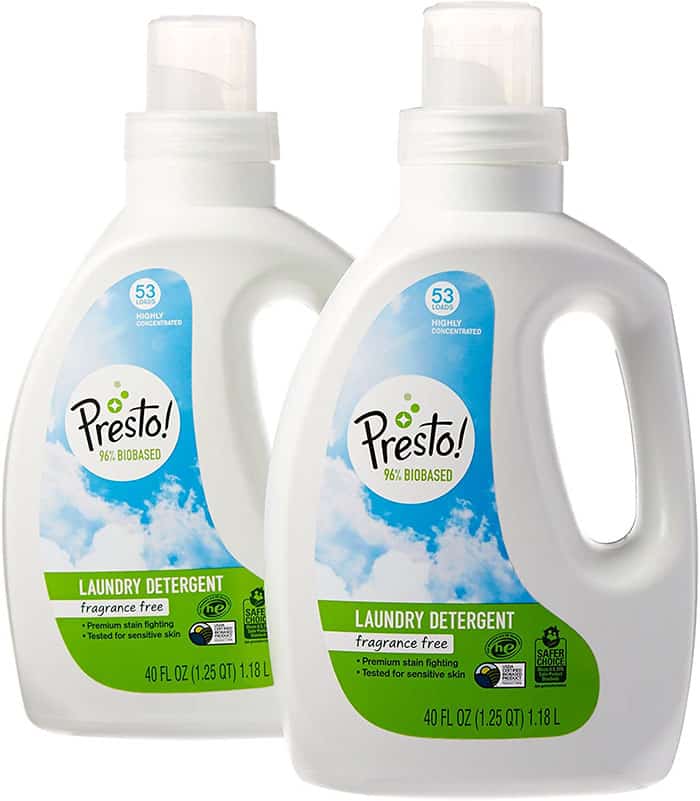Like your clothes and bedsheets, your pillows can harbor bacteria, fungi, and other germs. The New York Post reports that up to one-third of a pillow’s weight could be made up of dust mites, their dead bodies, and their waste after just two years of use.
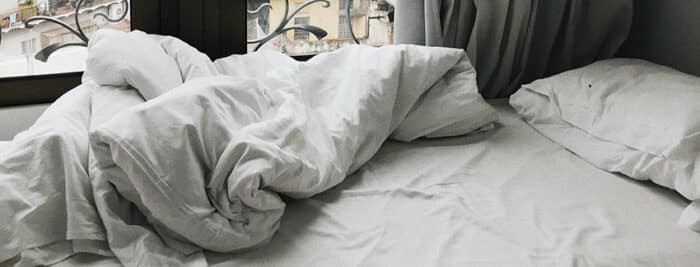
Generally, it’s recommended to wash your pillowcases along with your sheets or more often. Bed pillows, on the other hand, should be cleaned every three months.
The problem is that for most pillows, you can’t just throw them in the washing machine as you do with other linens.
Today we’ll show you how to wash pillows made of cotton, foam, and other materials — and why you should make a habit out of it.
Many latex and polyfoam pillows (especially solid core foam) are not machine-washable, but you can spot-clean them with a damp cloth and mild detergents. Tough stains can be removed with hydrogen peroxide.
If the pillow is made from shredded or other types of loose foam, it’s more likely that you will be able to machine wash it. Always double-check the care instructions tag to stay on the safe side.
With the tips below, your pillows will stay fresh and germ-free while maintaining their shape. Read on to find out more.
Why You Should Clean Your Pillows More Often
Your pillow is like a wet sponge that absorbs sweat, saliva, and other bodily fluids. Over time, it can become a breeding ground for bacteria and allergens. The longer you wait to wash or replace it, the more health risks you may face.

Clinical evidence indicates that both synthetic and feather pillows harbor multiple species of fungi, with the most common being Aspergillus fumigatus. This fungal pathogen can weaken your body’s natural defenses, contributing to infections.
The fungi, bacteria, and dust mites lurking in pillows may also worsen asthma and skin diseases. Make a habit out of washing your pillows at least four times a year at 130 degrees Fahrenheit to keep them germ-free.
Those with a jam-packed schedule may pillow protectors to extend the time between cleanings.
These accessories can increase your pillow’s life span while preventing the spread of bed bugs, dust mites, and mold spores. Plus, they are easy to wash—just throw them along with your bedsheets in the washing machine.
Now let’s take a closer look at the best ways to wash your pillows, depending on the model and type of fabric.
How Should You Wash Your Pillows?
IMPORTANT NOTE: Before you clean any pillow, look at its tag. It will have instructions on washing, drying, and care. If these guidelines are not listed on the tag, then check the manufacturer’s website.
Always follow your pillow’s care instructions. Failure to do so could result in your pillow being ruined by using an improper cleaning method.
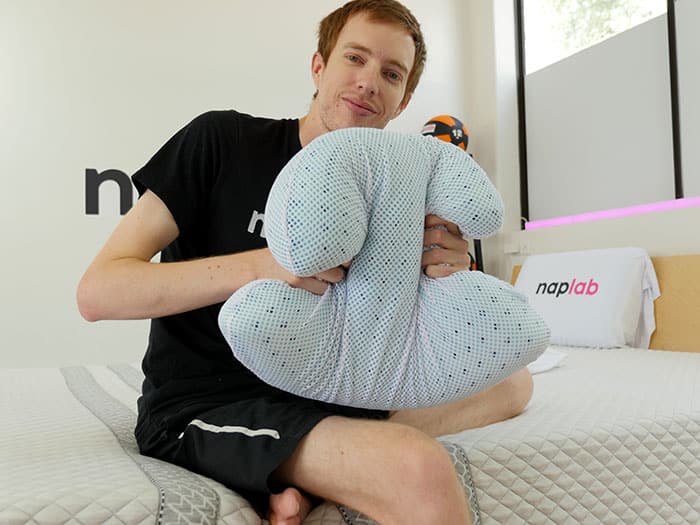
Most types of pillows can be cleaned in a washing machine. Some models, such as buckwheat and solid core foam (memory/latex/polyfoam) pillows, should be spot-cleaned or washed by hand.
First things first, read the cleaning instructions on the label. If it says “Dry-clean only” or “Do not wash,” it’s better to leave this job to a professional.
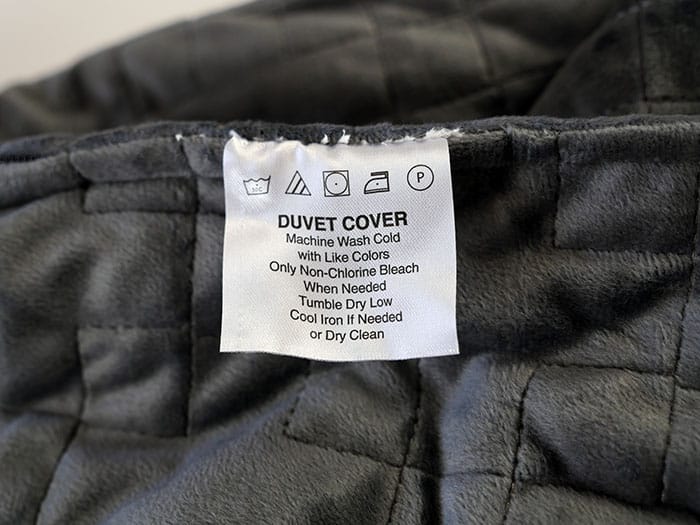
Next, get the tools needed for the job:
- Gentle laundry detergent
- Fabric softener or a natural alternative, such as baking soda mixed with white vinegar
- Liquid soap
- Stain remover
- Tennis balls/dryer balls
As a general rule, always wash two pillows at once to keep the machine balanced when it reaches the spin cycle. If you notice any stains, spray them with a spot remover and wait at least 15 minutes before washing.
Ready to give it a try? Simply follow the steps:
- Remove the pillowcase.
- Apply a laundry pre-treatment if necessary.
- Place the pillows in the washing machine. Position them vertically if your machine has an agitator.
- Add a small amount of laundry detergent or liquid soap. The latter option works best for polyester pillows.
- Wash the pillows with warm water on a gentle cycle.
- Add an extra rinse cycle to remove detergent residues.
- Throw your pillows into the dryer along with two or three tennis balls to fluff them up and reduce drying time. You may also tie a couple of tee shirts into balls or use a fabric softener.
- Take them out of the dryer and squeeze them to eliminate any remaining moisture. If it’s warm outside, leave them in the sun until they’re completely dry.
Some types of pillows can’t go in the washing machine. Others require extra care. This brings us to the next point…
How to Clean a Memory Foam Pillow (the right way)
Most latex and memory foam pillows should be spot cleaned or washed by hand in the sink or bathroom. If the pillow has a removable cover, you can usually put that in the washing machine.
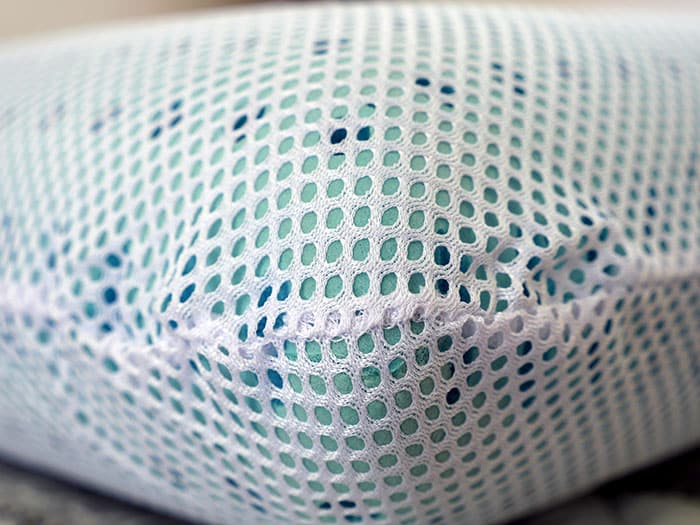
First, check the pillow for stains. If it looks clean, go ahead and wash it by hand.
How to Hand Wash Memory Foam Pillows
- Fill your bathtub with lukewarm water and add a small amount of liquid laundry detergent. Stir well.
- Take off the protective cover and place your pillow in the bathtub.
- Press down on the pillow with your hands, flipping it every few minutes.
- Drain out and refill the bathtub three to four times for a deep clean. Remember to add a gentle detergent.
- When you’re done, refill the tub without adding detergent. Submerge the pillow again and massage it gently to remove any detergent residue.
- Use the showerhead to rinse your pillow.
- Hang it in the sun or lay it on a flat surface in a well-ventilated room to air dry.
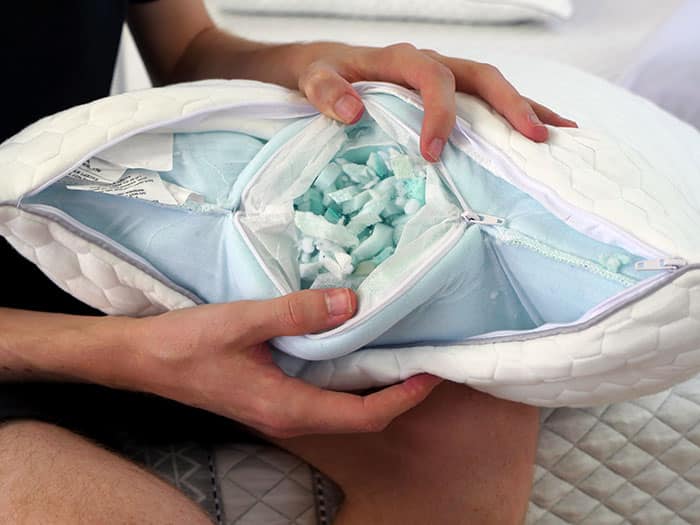
Generally, memory foam pillows are less prone to bacteria, mold, and allergens due to their antimicrobial properties. Since they require less frequent washing than regular pillows, you can spot-clean them to save time.
How to Spot Clean Memory Foam Pillows
- Mix a mild dish detergent or liquid soap with lukewarm water.
- Dip a cloth into the solution and gently rub the stain with slow, circular motions.
- Once the stain is gone, soak a clean cloth in water and remove the soap residue.
- Let the pillow dry outside or in a well-ventilated room.
Here’s a trick to eliminate odors and keep your foam pillows clean between washes: sprinkle some baking soda over the pillow and let it sit for two or three hours. Use a handheld vacuum to clean it up.
How to Wash Buckwheat Pillows
Buckwheat pillows mold to the shape of your body and keep you cool at night. With proper care, they can last 10 or 20 years. Washing them can be tricky, though.
As you might expect, it’s not advisable to clean a buckwheat pillow in the washing machine. The dryer is off-limits, too. Water can ruin the buckwheat hulls and your pillow unusable.
If you’re wondering how to wash pillows filled with buckwheat hulls, follow these steps:
- Open up the zipper and transfer the hulls into a large container or trash bag.
- Turn the pillow cover inside out to remove all the hulls.
- Wash the pillow cover by hand or put it in a washing machine. Use a mild laundry detergent. If the inner pillowcase is made of cotton, use cold water to keep it from shrinking.
- Let it air dry and then refill it with the buckwheat hulls.
Note that if you spill coffee, juice, or other liquids on a buckwheat pillow, you may need to replace the hulls. Otherwise, they may become moldy and develop odors.
If the hulls are damp but not soaked with water, remove them from the inner pillowcase and let them dry in a clean container.
How to Wash Feather Pillows Without Ruining Them
Down or feather pillows can be cleaned in the washing machine as long as there are no holes or tears in the pillow cover. Always use cool or lukewarm water and only a small amount of liquid soap or mild detergents.
Follow the same steps as you would for synthetic pillows. The only difference is that you’ll need to spin dry your feather pillow to fully remove the moisture. Once dry, shake them gently to get rid of clumps.
The Spruce advises against using fabric softeners on down or feather pillows. Instead, add a few tennis balls to the washing machine during the drying cycle to keep them fluffy. Run a second dry cycle if necessary.
Tips & Tricks for Fresh, Clean Pillows
Washing your pillows can be quite a challenge, but there are some things you can do to ensure everything goes smoothly.
For example, Martha Stewart recommends using a front-loading washing machine rather than a top-loading washer to keep your pillows from floating.
Ideally, wash them with natural laundry soap because it leaves fewer residues than traditional laundry detergents. Choose an organic soap or detergent for cleaning your pillowcases.
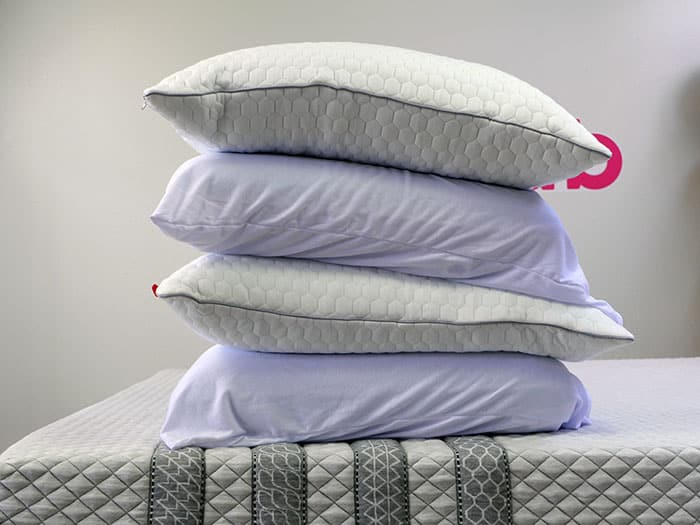
Use non-chlorine bleach and borax to whiten yellowed pillows. If they smell or have mildew, mix a half-cup of baking soda and some vinegar with the detergent.
If you prefer to wash your pillows by hand, place them in the dryer for a couple of minutes on low-medium heat. This trick will allow you to fluff them up and remove any remaining moisture. Dryer sheets generally are okay, but some brands contain toxic chemicals and may leave residues.
These rules apply to body pillows, too. Consider using a self-service laundry facility if your washer is not large enough.
Keeping Pillows Fresh Between Washes
Now that you know how to wash pillows made from natural or synthetic materials, take the steps needed to keep them clean and extend their life.
First of all, use a quality pillow protector and wash it every three to four weeks. A full encasement pillow protector may slightly increase your body’s temperature, but it also improves the pillow’s hygiene and longevity.
Second, let your pillows air out in the sun once a week or so. Sunlight kills bacteria and eliminates the moisture accumulated overnight. Another option is to run them through a non-heat drying cycle between washes.
Last, make sure you know when to replace your pillows. Even the best ones will lose their shape and get bumpy after two or three years of use. Some models may last longer but can still grow mold and mildew.
FAQ
Typically yes. Most pillows are machine washable. Front-load washing machines or top-load washing machines without agitators are the best options for washing pillows.
Always follow the manufacturer’s guidelines for the best way to wash a pillow. Most pillows can be washed on cold using the gentle cycle. Tumble on low to dry. Try to avoid washers with agitators as pillows may wrap around agitators and be damaged.
Yes, most pillows can be put in the dryer. Fully drying is an important step in cleaning pillows. Wet pillows, if left undried, may be a breeding ground for funky odors or mold to develop.
It depends on the pillow type. Most pillows last 2-3 years. Cheaper pillows may only last 1-2 years. More expensive down or latex pillows can last 5-10 years. See our guide here on how long pillows last for more info.
Questions?
Interested to find out more? Check out this printable house cleaning schedule to keep track of when it’s time to wash your sheets, towels, carpets, and other items in your home.

